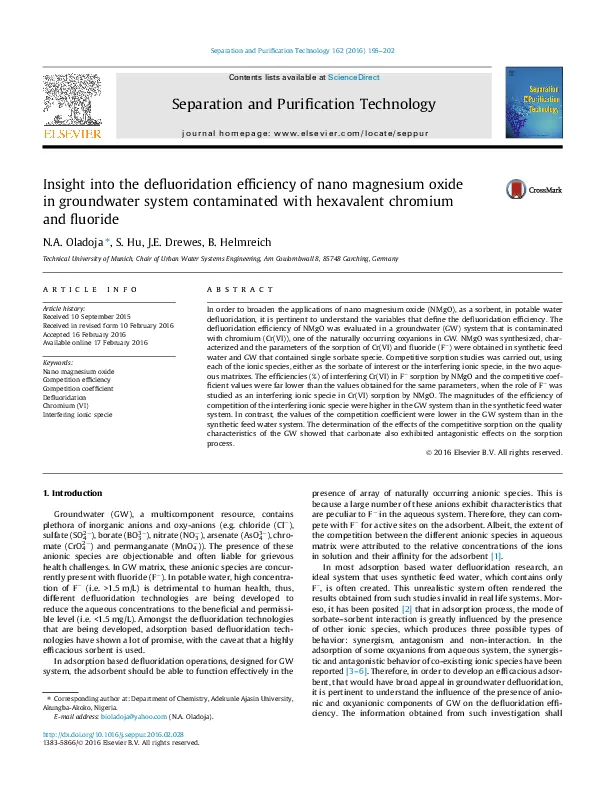In order to broaden the applications of nano magnesium oxide (NMgO), as a sorbent, in potable water defluoridation, it is pertinent to understand the variables that define the defluoridation efficiency. The defluoridation efficiency of NMgO was evaluated in a groundwater (GW) system that is contaminated with chromium (Cr(VI)), one of the naturally occurring oxyanions in GW. NMgO was synthesized, characterized and the parameters of the sorption of Cr(VI) and fluoride (F-) were obtained in synthetic feed water and GW that contained single sorbate specie. Competitive sorption studies was carried out, using each of the ionic species, either as the sorbate of interest or the interfering ionic specie, in the two aqueous matrixes. The efficiencies (%) of interfering Cr(VI) in F- sorption by NMgO and the competitive coefficient values were far lower than the values obtained for the same parameters, when the role of F- was studied as an interfering ionic specie in Cr(VI) sorption by NMgO. The magnitudes of the efficiency of competition of the interfering ionic specie were higher in the GW system than in the synthetic feed water system. In contrast, the values of the competition coefficient were lower in the GW system than in the synthetic feed water system. The determination of the effects of the competitive sorption on the quality characteristics of the GW showed that carbonate also exhibited antagonistic effects on the sorption process.
